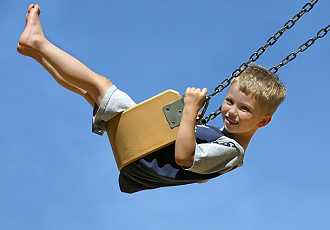Main causes of growth pain in children
Shuangshuang is 4 years old and a lively and lovely girl. Usually she seldom gets sick, but for the past six months she has always said that she has "leg pain".
The next day, whether the pain had disappeared or forgotten, she continued to jump and jump. At first, my parents thought that Shuangshuang was being coquettish and didn't care. Later, this kind of pain happened several times, so my parents were worried and hurried to take Shuangshuang to the hospital for examination. After various examinations, the doctor diagnosed Shuangshuang as "growth pain" and told Shuangshuang's parents not to worry. Many children of Shuangshuang's age had experienced this "growth pain".
So what is "growth pain" really about?
Growth pain is a special physiological phenomenon during children's growth and development, which is mostly seen in children aged 3-12 years with normal growth and development. Growth pain is mainly manifested as intermittent lower limb pain. Most of the pain is dull pain, which can also be acupuncture like pain, or even severe traction pain. The pain is mostly in the knee joint, followed by the thigh and lower leg, or in front of the lower leg bone. Pain occurs irregularly and intermittently, often at night, lasting from several minutes to several hours, without wandering, and without limited physical activity. Pain attack is not accompanied by fever, rash and other systemic symptoms.
The main causes of growth pain in children are as follows:
·Children with rapid bone growth, especially children aged 3-6 years old, have rapid bone growth, while the growth of nerves, tendons and muscles around the long bones of the limbs is relatively slow, resulting in traction pain.
·Metabolites accumulation Children are overactive, or there are too many tissue metabolites in the development process that cannot be excreted and cleared quickly, which will cause accumulation of acidic metabolites, resulting in muscle soreness.
·Tibial varus When children start to learn to walk, their shins are relatively curved. In order to adapt to this phenomenon, the human body will appear a certain degree of knee valgus compensatory. With the growth of the body, most children rely on the strength of leg muscles, which will gradually correct the two temporary deformities of tibial adduction and knee valgus, while a few children do not correct them in time. In order to maintain the stability of joints, leg muscles must always remain tense, causing pain.
For the treatment of growth pain, the most important thing is to have a rest in time. Don't force your child to do more exercise if his knee or calf is uncomfortable after school. You can use hot water to soak your child's feet and legs before going to bed at night. When the pain is severe, you can give local massage, hot compress, apply essential balm or take pain killers, or take vitamin C in an appropriate amount. When children are not tired at ordinary times, they should be encouraged to participate in more activities and exercise muscle strength to promote the natural correction of tibial adduction.
Once the baby has growth pain, parents need not panic. With the growth of age, the growth pain of most children will disappear when they are approaching puberty, which will not affect the normal growth and development of children, and will not leave joint deformity even if the pain occurs repeatedly.
 Learn about parenting knowledge, watch parenting blogs and forums, and go to the parent-child channel baby.sina.cn
Learn about parenting knowledge, watch parenting blogs and forums, and go to the parent-child channel baby.sina.cn

![]()








